Cost to Fix Subsidence
Last updated 18th September, 2024
Have you found some subsidence cracks in your home? Need to know more?
If you need to know the cost of subsidence repair, this article will help you understand all the factors involved. The cost to fix subsidence can can be anything from £50 to as much as £50,000 if the damage is severe. So, if you want to know how to repair subsidence damage, understand underpinning cost, or familiarise with the other potential solutions, this is the guide for you!
Keep reading for more in-depth information!
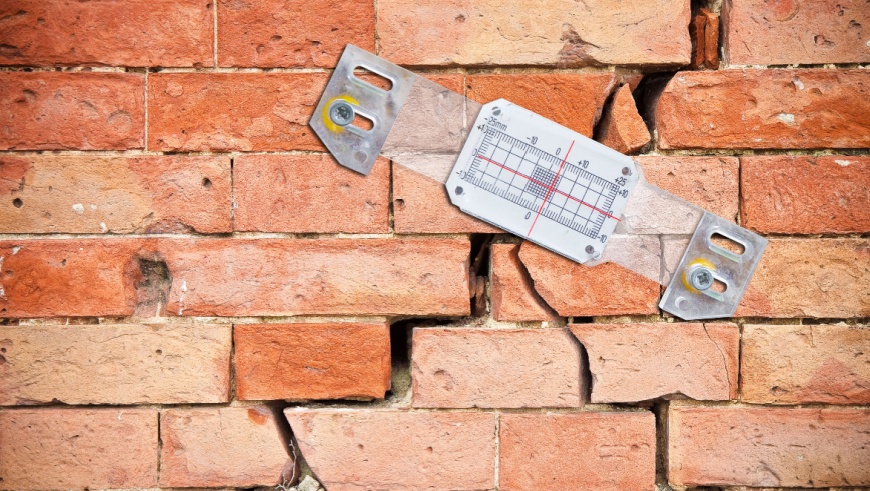
How Much Does It Cost to Fix Subsidence?
If you suspect you are experiencing subsidence with your property you should contact your home insurance provider, who will appoint a property surveyor or structural engineer to assess the severity and cause of the subsidence.
Once the cause has been established, there are a number of potential routes that can be suggested to fix the issue, with the costs ranging from as little as £50 to repair a broken gutter to as much as £50,000 if you require extensive home underpinning.
The average cost, if not claimed through home insurance
Depending on the repair method needed, the time taken to fix your issue may range from 1 hour for minor repair work to upwards of 8 weeks in extreme cases of subsidence where underpinning is required across multiple walls.
You should address subsidence issues as soon as they appear; failing to do so will inevitably increase the cost of repair.
Subsidence Repair Prices
If you find that your property has experienced subsidence, there are a number of potential routes to take to repair it once the source of the damage has been identified.
The below costings are for property surveyance which will be necessary to determine the cause of the subsidence:
| JOB DESCRIPTION | ESTIMATED COST |
|---|---|
| Full building survey | £300 – £2,000 |
| CCTV drain survey | £100 – £250 |
Once the cause has been determined, there are a number of solutions that you may be advised to implement:
| JOB DESCRIPTION | ESTIMATED COST |
|---|---|
| Tree felling | £200 – £300 |
| Gutter repair | £50 – £150 |
| Drain repair | £200 - £1,200 |
| Gutter replacement | £450 – £750 |
| Underpinning (single wall) | £5,000 – £36,000 |
In major cases of subsidence, you may be advised that the only reasonable solution to your issue is to have your home “underpinned” – a process of adding to your home foundation’s depth or breadth in order to increase the surface area and rest the home on a more stable surface.
Underpinning is a long and expensive process, and most home insurance companies will only advise underpinning when it is absolutely necessary, where no alternative is available. The table below outlines the estimated cost of underpinning per m2 based on the underpinning method used:
| TYPE OF UNDERPINNING METHOD | AVG. COST PER M2 |
|---|---|
| Resin injector | £1,200 |
| Traditional mass concrete | £1,500 |
| Mini-piling | £2,500 |
It should be noted that in most cases subsidence is covered under your home or building insurance, typically with a minimum of a £1000 excess charge.
Table of Contents
- How much does it cost to fix subsidence?
- Labour costs and time frames
- What is subsidence?
- What are the signs of subsidence?
- What causes subsidence?
- What does fixing subsidence entail?
- Cost affecting factors of subsidence repair
- DIY subsidence repairs
- Subsidence repair costs
- Benefits of fixing subsidence
- Frequently asked questions
- How to find & hire subsidence experts
- Sources
Additional Costs
Once the source of your house subsidence has been addressed, you may find that there is additional work required in order to rectify damages caused.
One of the big tell-tale signs of subsidence is wide cracks presenting themselves, and these will usually need to be rectified as an addition to sorting your subsidence issue.
These additions can include:
Having Bricks Replaced Cost
When subsidence occurs, you may find it necessary to have bricks in your walls replaced if they have been cracked or damaged.
Bricks typically cost around £10 - £20 each, with an estimated cost of around £120 p/m2 for materials.
The average labour charge for a brick layer is between £150 - £325 per day depending on your location within the UK.
It may be worth asking your bricklayer to replace bricks and repoint your wall at the same time to reduce overall labour costs.
Average cost: £120 p/m2
Having Your Brickwork Repointed Cost
Repointing involves the removal of old mortar, cleaning the wall and applying new mortar in the gaps.
Repointing can be pursued as a DIY task if you want to save money on labour costs and is fairly cheap to complete yourself if you have the patience and knowhow.
Average cost: £40 p/m2
Rendering External Walls Cost
Rendering can serve as a protective barrier on your home against external moisture but is also popularly used as an aesthetic choice of wall finishing.
If you have previously had rendering of your home and it has been damaged by subsidence, you may want to consider having your affected walls re-rendered so that they match the rest of the property.
In most cases you will probably require some sort of scaffolding hire in order to reach high-up areas.
Most rendering tradespeople will be able to supply their own and it will be integrated into their costings accordingly.
Average cost: £60 p/m2
Install Replacement Windows Cost
In the event that your subsidence has caused your window frames to warp, you may want to consider installing replacement windows in affected areas of your home.
Properly installed windows are important for ventilation, insulation and damp-proofing a home.
Average cost: £325 per window
Internal Plastering and Decorating Cost
When damage has been caused to your internal walls by subsidence cracks it can be unsightly; your best course of action would be to hire a plasterer or decorator to fix the affected areas before moving on to decorating.
Depending on the scale of the damage caused, plastering can take as little as four hours to cover an entire wall.
Hiring a professional decorator to paint over the set plaster will cost roughly £250, including a second visit the day after to apply a second coat – Though you could save yourself some money and complete these jobs yourself if you have the time and patience to do so.
Average cost: £200 - £250 a day
Cost Breakdown Calculator
The average cost to have subsidence fixed, assuming a single wall requires underpinning in a 3-bedroom semi-detached building: £14,000
Materials
£11,900
Labour
£1,400
Waste and Removal
£700
Labour Costs and Time Frames
A structural engineer will typically charge between £50 - £100 an hour for their services and will be responsible for undertaking structural inspections, ground tests and helping with building control permission, as well as advising the best course of action to take.
Depending on the cause of your subsidence, you may also require the services of a tree surgeon or a plumber, with day rates of around £150-200 a day each, and usually working in teams of two.
The time taken to fix the subsidence issue will vary according to the cause, and can take from 5 days (for example, removing or trimming a series of encroaching trees) to up to six weeks from start to finish depending on the extent of the observation required and the solution employed (such as underpinning).
What Is Subsidence?
Subsidence is generally an issue for homes built on unstable soil, usually clay, in which part of the property’s foundations sink into the ground – Which can lead to cracks in the building and, depending on the severity, can cause damage to the structural integrity of the property.
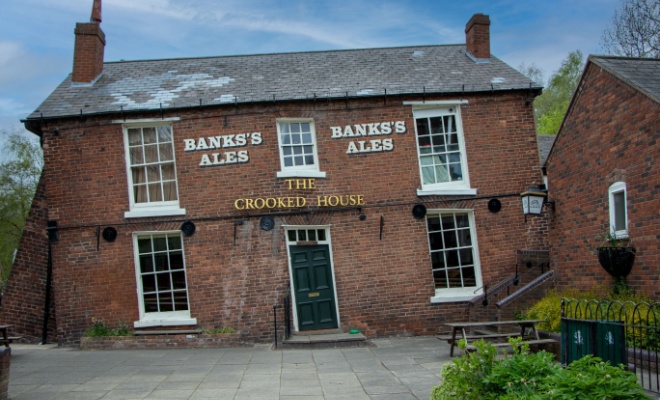
What Are The Signs of Subsidence?
There are a few tell-tale signs that your property may be subsiding:
- Cracks in your walls, usually wider than 3mm, and typically wider at the top that the bottom.
- Cracks in your ceilings and wall joining’s may develop.
- Existing cracks may expand.
- Doors and windows may become stuck or stiff; this can indicate warping of frames due to subsidence.
- Wallpaper may start rippling without the presence of damp.
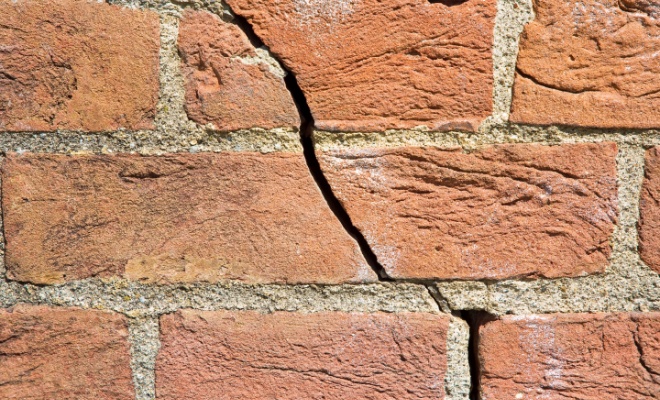
If you suspect your home is subsiding, you should contact your insurance company who will send a representative to carry out a subsidence survey at the site and recommend the best course of action.
What Causes Subsidence?
Subsidence can be the result of a few factors and understanding the cause can help determine the necessary solution for the situation.
Ground Condition
The majority of buildings that experience subsidence are built on clay soil types. Clay has a high-water content (around one third) and can therefore be susceptible to changes in moisture.
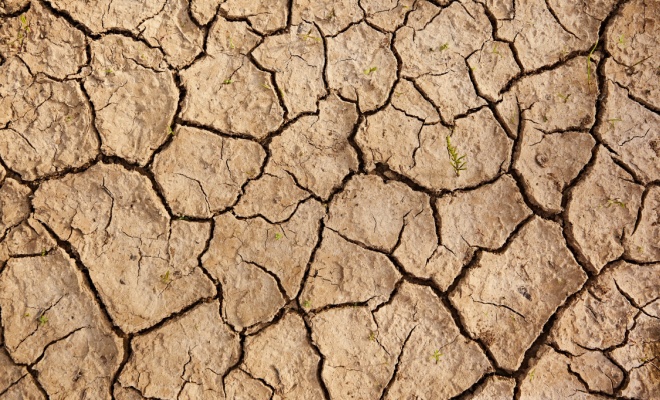
Prolonged dry periods and vegetation can cause the soil to dry out, which causes the soil to lose volume, which in turn can cause building foundations to subside.
Encroaching Foliage
Trees and shrubbery require plenty of moisture in order to grow.
As trees grow their roots spread further in order to absorb moisture; If a tree is in close proximity to a building, they will likely dry out the soil near or beneath the foundations, which can cause the soil volume to decrease – or may even cause cracks in the foundations.
It’s estimated that roughly 70% of subsidence cases are caused by trees.
Leaking Drains and Blocked Guttering
In contrast to dry spells and thirsty foliage, leaking drains and guttering can be just as much of a culprit to subsidence as drought; excessive water can wash away soil particles or soften the soil which can result in your property sinking.
Poor Foundation Work
Unfortunately, sometimes the culprit of property subsidence is that the building was placed on inadequate foundations to begin with, leaving little chance of subsidence being avoided.
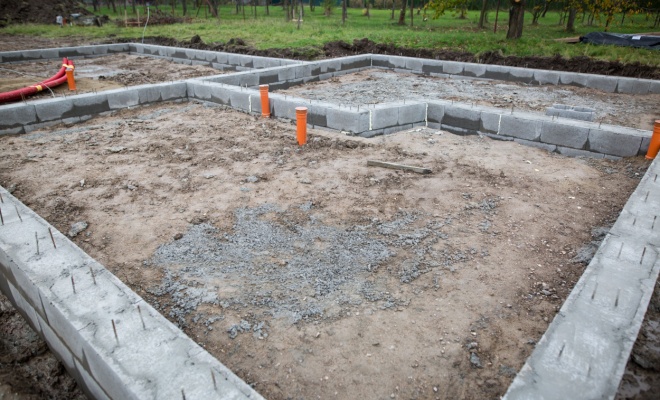
Poor foundations can be a result of a mix of things, such as incompetence builders or simply penny-pinching with little consideration of the knock-on effect.
Nearby Mining Activity
Mining works can affect ground stability and have been known to cause subsidence in properties.
If your home subsidence is deemed to be caused by mining activity you may be able to claim back some of the costs to rectify the issue through the government. For more information, click here.
What Does Fixing Subsidence Entail?
If you suspect that your house is subsiding your first point of call should be to contact your home insurance provider, who will arrange for a home surveyance to assess whether subsidence is taking place, the extend of the subsidence and the suspected cause.
In some cases, your surveyor may be able to advise immediately the issue, or may be required to carry out observation, which can include digging a hole near the subsidence site to monitor how far and how quickly the property is succumbing to subsidence – and can take up to a year for your insurance company to determine the best course of action.
You may be responsible for sourcing your own tradespeople to complete the required action in-line with your insurance providers’ guidelines and criteria.
Once the cause of the subsidence has been established there are three main routes that are used to fix the cause of the subsidence.
Tree and Foliage Maintenance and Removal
Drain Pipe and Gutter Repair
Underpinning Your Foundations
If it has been determined that the cause of the subsidence has been caused by tree roots draining away moisture from the ground and resulting in soil shrinkage.
You may be advised to undergo either tree removal where appropriate (in some instances, you may be advised against removing the intruding trees - particularly if there is a fear that your soil will become oversaturated as a result), tree pruning or to put measures in place to stop growth encroaching on your building foundations, such as installing root barriers.
If the source of your subsidence is deemed to be excess water presence near your foundations, you may be advised that you need to have your drains repaired.
A CCTV survey may be required to check whether your lines have a puncture if the source of a leak is not visible above-ground.
You may also be advised that your home guttering needs repairing or replacing, clearing or having leaf guards installed to prevent blockages occurring.
Underpinning is the process of strengthening existing foundations of a building by extending the foundations either in depth or breadth to distribute weight across a greater surface area.
Underpinning can be accomplished using jet grouting or mini-piles, resin injecting, or, may involve introducing grout to the soil as a means of strengthening it.
In order to gain access for the new foundation layer to be laid a segment of ground will need to be excavated beneath the existing foundations.
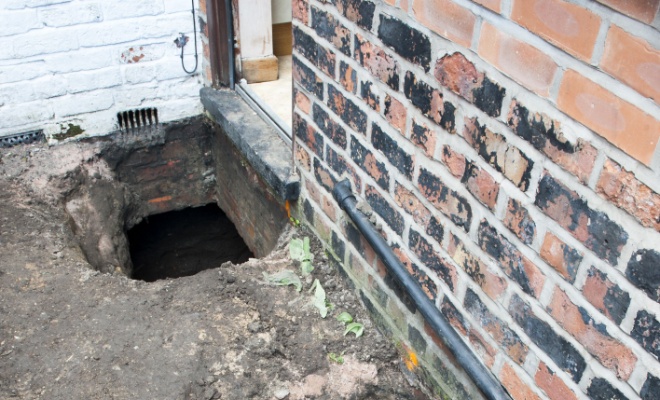
The preferred method of underpinning involves the use of concrete, which is poured into the hole and allowed to cure before the next site is excavated – The process is continued until adequate underpinning has been put into place.
Underpinning is typically used as a last resort as it is an expensive solution to the subsidence, and can take up to six weeks to complete, with an average underpinning cost per meter at around £1,500 depending on the method used.
The Royal Institute of Chartered Surveyors (RICS) estimates that only 10% of homes experiencing subsidence require underpinning.
Once the subsidence has been taken care of you will likely need to employ other services to take care of repair work necessary after subsidence, such as repointing and redecorating.
Cost Affecting Factors of Subsidence Repair
As with most home repair work, there are a number of factors that can have a direct effect on the cost of repairing subsidence at your property.
Location Within the UK
Your geographical location within the UK can play a huge role in the costs you pay for professional services, with London and the surrounding areas costing considerably more than other areas of the UK.
Severity and Scale of Subsidence
House subsidence repair costs will vary according to scale of the subsidence (one corner of the property or a whole wall, for example) and its severity, whether it has caused minor damage before it has been addressed or if excessive sinking has occurred. It goes without saying that the more repair work needed, the greater the cost.
Cause of Subsidence
The root of the subsidence can also affect the overall cost of repair; a blocked gutter or drain causing fluid overflow will be considerably cheaper to repair than shoddy or inadequate foundations.
Insurance Provider
Your insurance provider and policy will have a large impact on the overall cost of repair to yourself; Different policies cover different aspects of repair or, in some cases, may not cover the cost of rectifying subsidence at all. < It’s always best to check your policy thoroughly to ensure you understand what is and isn’t covered.
Cost of Tradespeople
If you are paying for tradespeople yourself to rectify damage caused by home subsidence, rather than through an insurance claim, you are advised to ‘shop around’ for reliable workers in your area with experience and knowledge in their area of work. You can use this link to get three free quotes from trusted tradespeople in your area regarding work that you require on your home.
DIY Subsidence Repairs
Unfortunately, you cannot fix subsidence as a DIY project; Subsidence is a serious issue that can pose a risk to your property’s structural integrity and requires the attention of a recognised subsidence professional.
A chartered surveyor will need to be appointed to survey your property and determine the best course of action to take in order to control and rectify your subsidence issues; this may include replacing and repairing drains, tree and shrubbery management or gutter repair and will most likely be covered by your insurance claim.
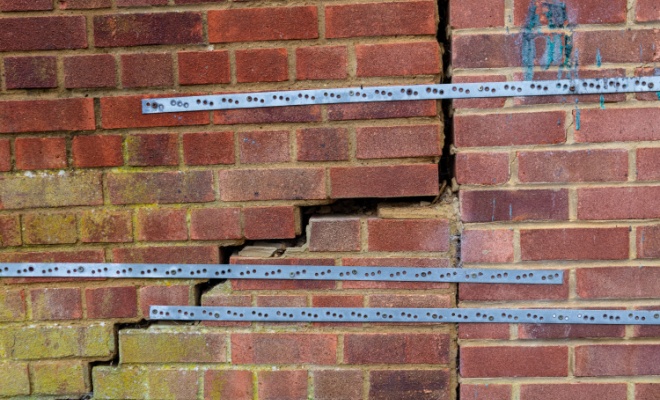
The fix will also need to be signed off by your surveyor, or in the case of underpinning, you will need to acquire a completion certificate in accordance with building regulations. More information on building regulations can be found here.
If you want to control the costs, there are some budget friendly alternatives to hiring a professional to complete cosmetic works to your property once your subsidence issues have been addressed:
- You can re-plaster yourself
- You can repoint walls yourself
- You can redecorate internal walls
- You can render external walls yourself
It should be noted that many of the DIY aspects that you are able to complete I relation to subsidence do require adequate know-how and patience, as well as adequate safety precautions such as scaffolding to reach high-up places, or wearing gloves and facemasks when mixing mortar.
Once your subsidence issue has been fixed, there are maintenance jobs that you can undertake DIY to save money on repeat services and reduce the risk of experiencing subsidence issues again, such as:
- Checking the condition of your gutters and ensuring they are free from foliage and debris.
- Shrubbery and tree pruning maintenance
Ensuring your drains are used for their intended purpose and reduce foreign objects being flushed down your pipes that may cause a blockage in the future.
Subsidence Repair Costs
As discussed earlier, the cause of your subsidence will likely dictate the appropriate solution that needs to be undertaken to repair subsidence issues at your property. The most common solutions include:
Cutting Back or Removing Trees Cost
Excessive foliage or foliage in very close proximity to your building can cause havoc with the soil conditions and interfere with any underground pipework that they encounter.
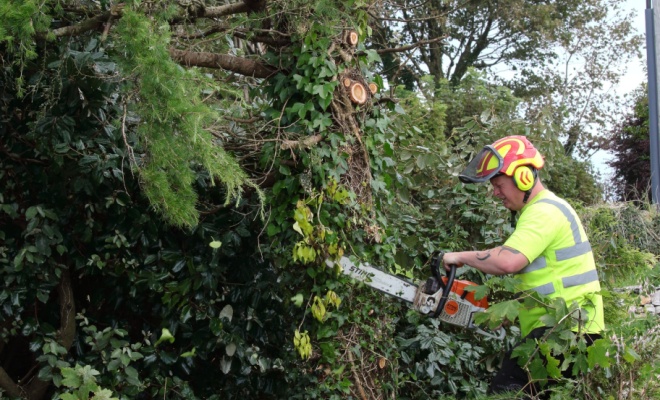
It’s estimated that 70% of subsidence issues are related to nearby tree growth.
A common solution to subsidence is to have your trees and shrubbery either cut down or pruned, which in turn reduces the amount of water in the soil that is absorbed into the plant, which reduces soil shrinkage.
In some cases, you may be advised not to have the offending trees removed entirely, as this will also affect the water content within the soil and may result in ground heaving, and instead will be required to undertake tree maintenance.
Estimate cost: £200 – £2,500
Repair Damaged Drains, Guttering and Pipes Cost
Leaking or damaged underground pipes can cause excess water in soil surrounding your property, which can wash away soil and cause your home to sink or subside.
A CCTV survey will likely be undertaken to determine if this is cause of the subsidence.
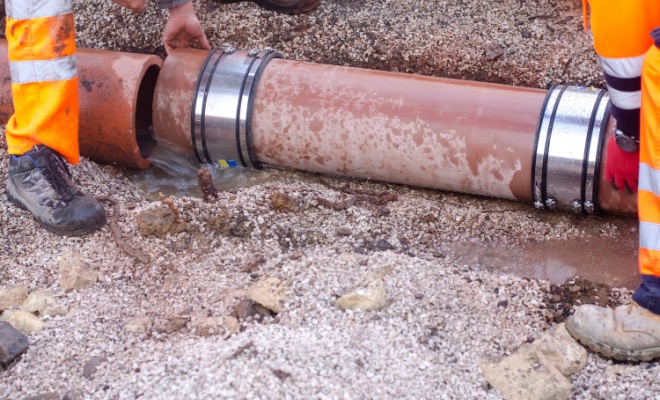
Small holes in your pipes can be patched and repaired, whereas full ruptures or blockages that cannot be removed may require new pipes to be laid to fix the issue.
Similarly, if your home guttering is blocked or damaged it can cause excess water to leak into surrounding soil and this too will need to be rectified in order to get your subsidence under control.
Estimated cost: £200 – £1,200
Have Your Foundations Underpinned
In severe cases of subsidence, it can be necessary to part of your home underpinned, which is essentially adding additional foundation depth or breadth to your home to aid in stabilisation.
The extent of the underpinning required will be dependent on the amount of land affected and can take between 3 – 6 weeks for a single wall to be underpinned depending on the severity of the subsidence and the size of your home.
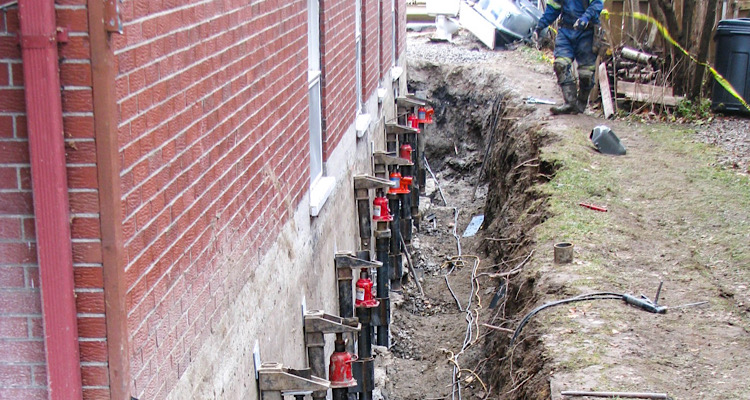
If more than one wall requires underpinning, the process will take considerably longer, and the price will increase accordingly.
In some cases, your home may need to be monitored before underpinning can commence, in which case the process may take up to a year to complete.
Estimated cost: £5,000 - £50,000
Benefits of Fixing Subsidence
Subsidence is a serious issue that needs to be addressed as soon as the issue presents itself.
If you suspect subsidence is occurring its best to act quickly; It’s likely that if you spot subsidence in its early stages it will be cheaper to rectify the issue both in terms of repair costs and in terms of damage control; a ruptured pipe that is left unattended will cause considerably more damage to your property than a pipe that is attended to immediately, for example.
Because subsidence can affect home insurance availability, it’s important that you keep all documentation of the work undertaken to rectify the issue – This is particularly important if you choose to sell the property at a later date as you will need it as proof of works carried out and evidence that the issue has been rectified correctly in accordance with building regulations.
FAQs
Properties prone to subsidence or with previous subsidence issues can be difficult to insure as most insurance companies do not want to risk having to pay out for potential damages in the future.
You should check your policy to see exactly what is covered and how much excess you would be expected to pay in the event of subsidence.
Small hairline cracks can be the result of expansion and contraction as a result of changes in the weather and are perfectly normal; these are sometimes called settlement cracks as the house adjusts itself.
You should keep an eye on any cracks that do appear in your home, but don’t assume that every crack is caused by house subsidence.
How to Find & Hire Subsidence Experts
Subsidence can pose a real threat to your property and should be handled by a professional with adequate experience and knowledge of the subject; It’s recommended that your property surveyor is registered with the Royal Institute of Chartered Surveyors (RICS) – but you should not necessarily choose the first company or person that you come across; do your research and hire someone that you feel is best suited to your expectations.
Subsidence can be costly to fix, so make sure that you are getting the best value for your money by collecting at least three quotes from trusted sources before committing to a tradesperson; this is true for any plumber, tree surgeon or surveyor that you may require – You can get three free quotes here from trusted tradespeople in your area.
It's recommended that you talk to family, friends or neighbours regarding any subsidence work they may have had carried out on their property and whether they would recommend their tradesperson to you; they will likely be honest with their opinion and experience which can indicate whether their trader is the right person for you or not.
You should check that your tradespersons hold liability insurance so that in the event that damage, or accidents occur during the work they are covered and liable to recover the costs.
Most companies that operate correcting subsidence should have a portfolio of their work available for you to assess the work carried out and ask any questions you have regarding processes and timeframes.
Sources
https://www.financial-ombudsman.org.uk/businesses/complaints-deal/insurance/home buildings-insurance/subsidence-types-ground-movement
https://www.ricsfirms.com/media/1196/rics-consumer-guide-subsidence.pdf










